1.0 mol of a monoatomic ideal gas is expanded from state 1 to state 2 as shown in Fig. 6.4. Calculate the work done for the expansion of gas from state 1 to state 2 at 298 K.
It is clear from the figure that the process has been carried out in infinite steps hence it is isothermal reversible expansion.
Related Solutions
1.0 mol of a monoatomic ideal gas is expanded from state (1) to state (2) as shown in figure. Calculate the work done for the expansion of gas from state (1) to state (2) as 298 K.
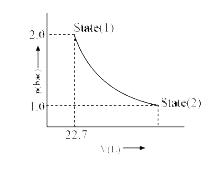
View Solution1.0 mol of a monoatomic ideal gas is expanded from state (1) to state (2) as shown in figure. Calculate the work done for the expansion of gas from state (1) to state (2) as 298 K.

View Solution1.0 mol of a monoatomic ideal gas is expanded from state (1) to state (2) as shown in figure. Calculate the work done for the expansion of gas from state (1) to state (2) at 298 K.
View Solution1.0 mole of a monoatomic ideal gas is expanded from state (1) to state (2) as shown in figure. Calculate the work done for the expansion of gas from state (1) to state (2) at 298 K
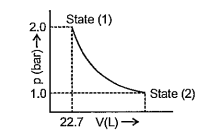
View Solutionmole of a monoatomic ideal gas is expanded from state (1) to state (2) as shown in the figure. Calculate ti work done for the expansion of gas from state (1) to state (2) at 298 K

View SolutionAt a temperature of 298 K, 1 mol of a monoatomic ideal gas is expanded from the State (1) to State (2) as shown in the graph: Find out the work done for the expansion of gas from the State (1) to State (2) at 298 K?
View SolutionAn ideal gas change from state a to state b as shown in Fig. what is the work done by the gas in the process?
View SolutionAn ideal gas change from state a to state b as shown in Fig. what is the work done by the gas in the process?
View SolutionAn ideal gas is changes from state a to state b as shown in Fig. What is the work done by the gas in the process.
View SolutionAn ideal gas goes from the state I to to the state f as shown in figure. The work done by the gas during the process

View SolutionAn ideal gas goes from the state i to the state as shown in .the work done by the gas during the process
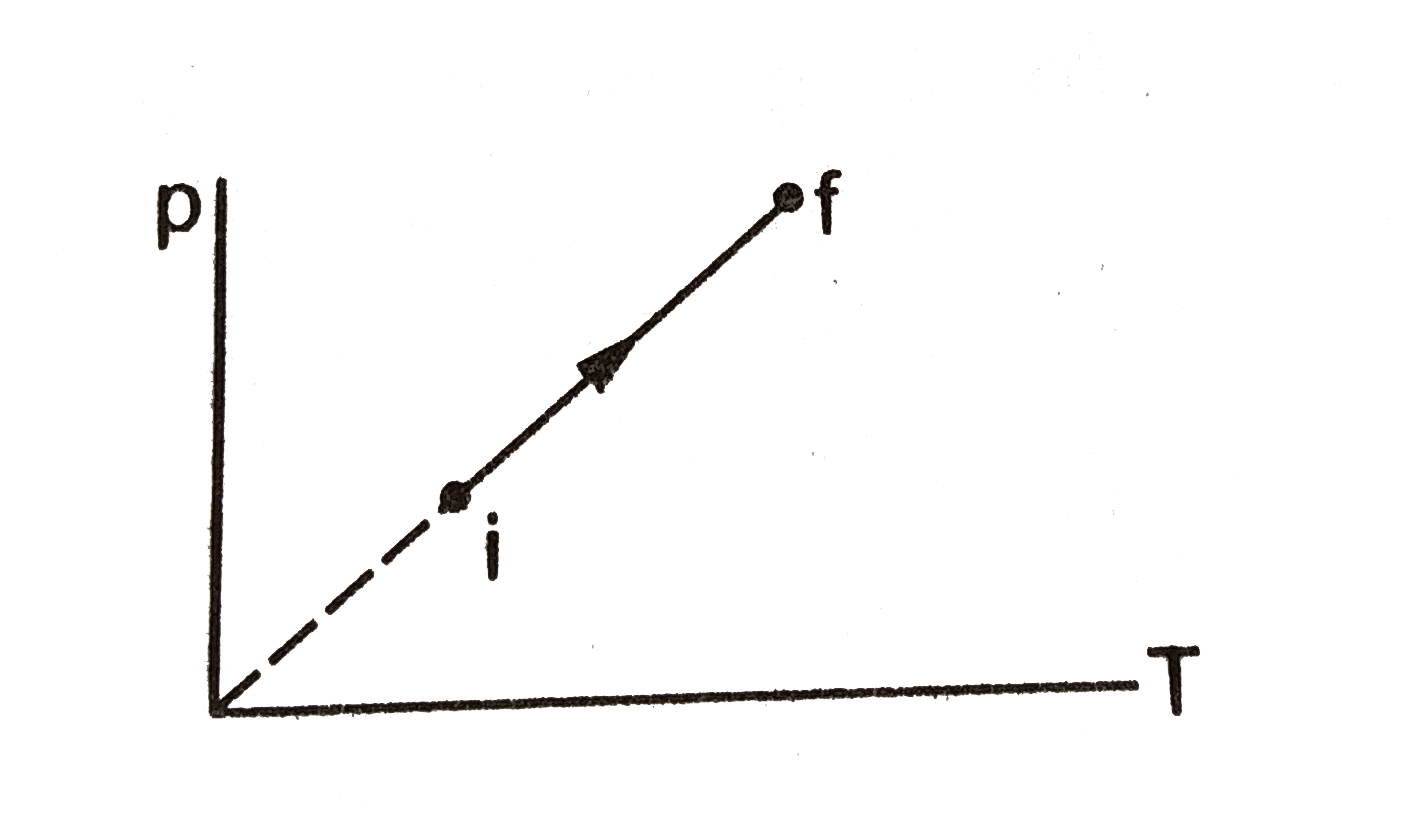
View SolutionAn ideal gas goes from the state i to the state as shown in .the work done by the gas during the process

View SolutionAn ideal gas goes from the state i to the state as shown in .the work done by the gas during the process

View SolutionAn ideal gas goes from the state i to the state f as shown in figure. The work done by the gas during the process
View SolutionThe state of an ideal gas is changed through an isothermal process at temperature as shown in figure. The work done by the gas in going from state B to C is double the work done by gas in going from state A to B. If the pressure in the state B is , then the pressure of the gas in state C is

View SolutionThe state of an ideal gas is changed through an isothermal process at temperature as shown in figure. The work done by the gas in going from state B to C is double the work done by gas in going from state A to B. If the pressure in the state B is , then the pressure of the gas in state C is

View SolutionThe state of an ideal gas is changed through an isothermal process at temperature T_0 as shown in figure. The work done by the gas in going from state B to C is double the work done by gas in going from state A to B. If the pressure in the state B is (p_0)/(2) , then the pressure of the gas in state C is
View SolutionA given mass of gas expands from state A to state B by three paths 1, 2, and 3 as shown in the figure :
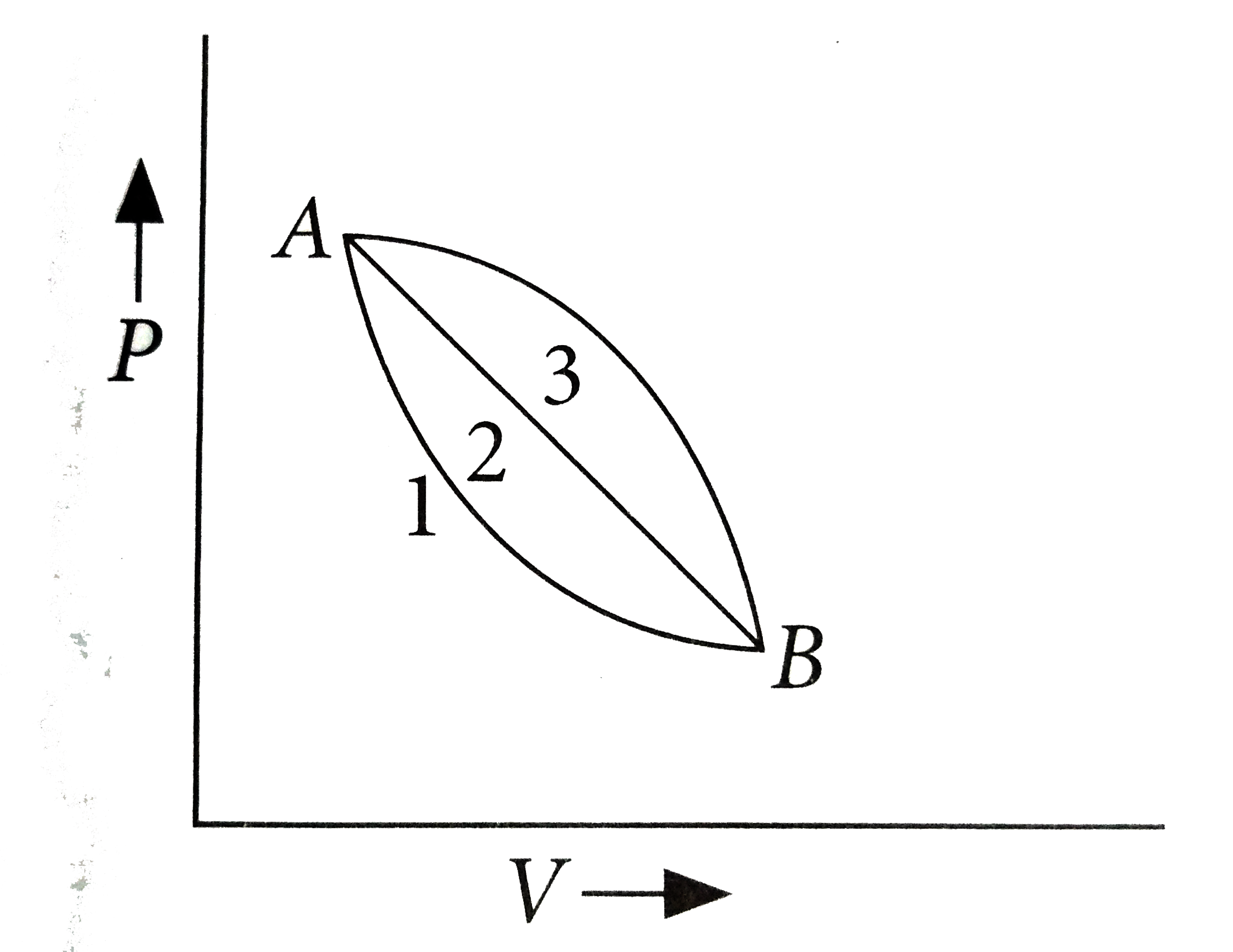
If respectively, be the work done by the gas along three paths, then
View SolutionA given mass of gas expands from state A to state B by three paths 1, 2 and 3 as shown in the figure If w_(1), w_(2) and w_(3) respectively are be the works done by the gas along three paths, then
View SolutionCalculate the work done by the gas in the state diagram shown.
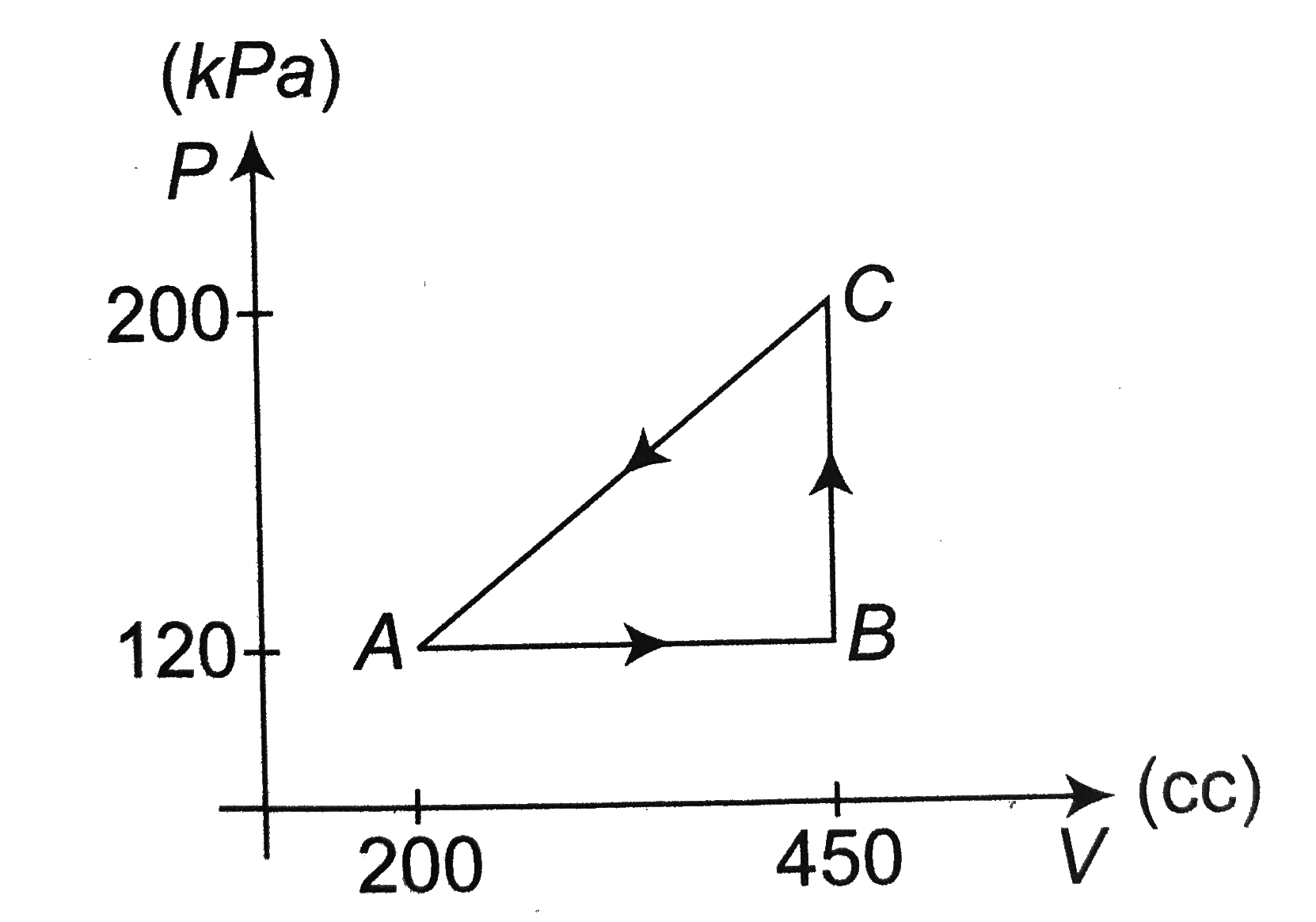
View Solution